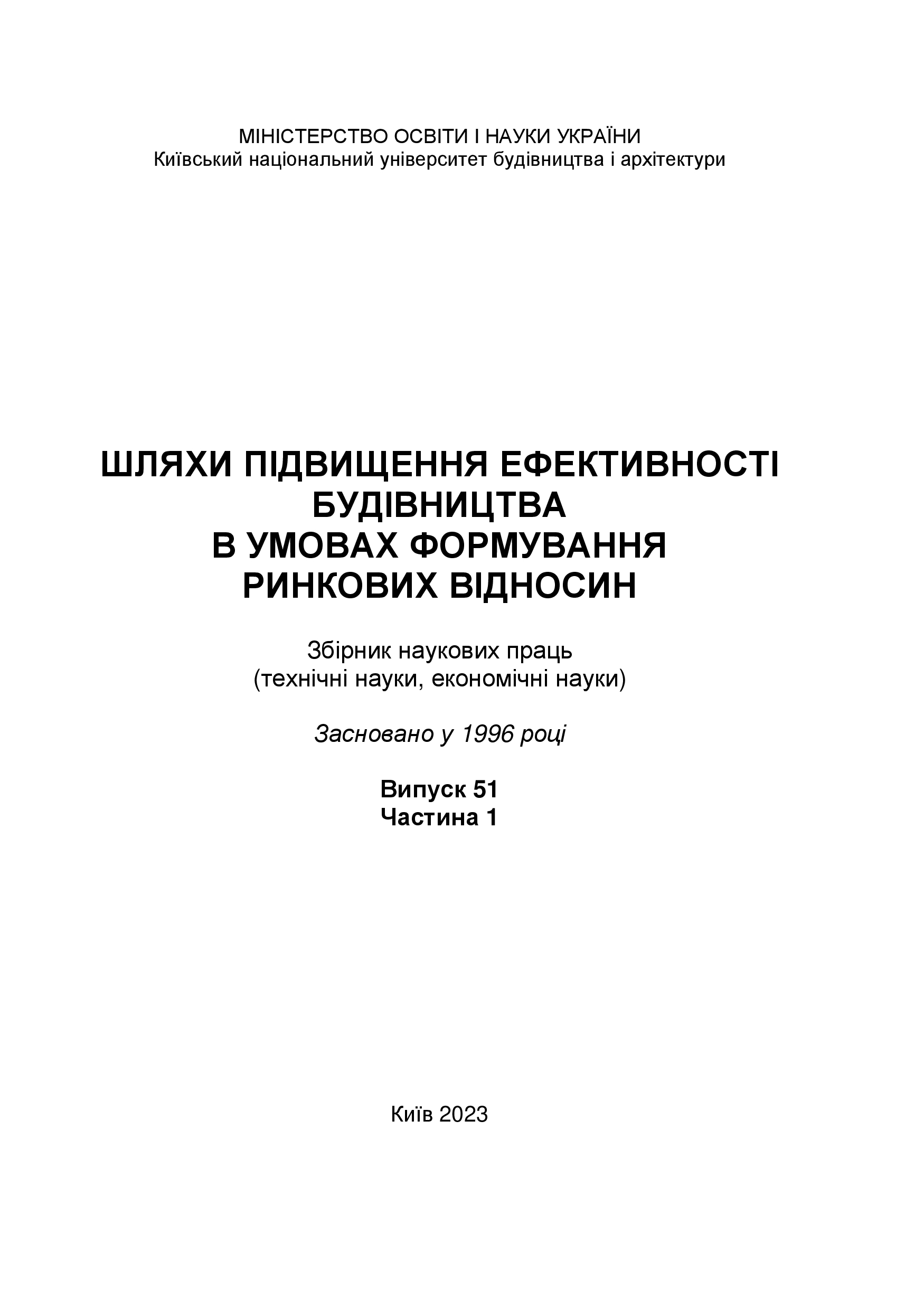The impact of construction on the environment - the European experience of normative and legal regulation in Ukraine
DOI:
https://doi.org/10.32347/2707-501x.2023.51(1).172-181Keywords:
legal regulation, construction, sustainable development, ecology, impact on the environment, construction enterprisesAbstract
Construction is a sector of the economy that directly affects the ecology, changing existing ecosystems and creating a new modified environment, which leads to the transformation of the existing one. Taking into account the importance that the implementation of construction projects has for the successful transformation of the environment, the study of factors of influence, design and other activities of construction participants on the environment, the development of systems for assessing such effects and their implementation in practical activities remains an extremely urgent task. The article examines the regulatory and legal documents of the EU regarding the regulation of the ecological consequences of the impact of construction on the environment, and also systematizes the directions of the impact of construction on the environment. Construction has a significant negative impact on the environment, which is accompanied by the transformation of ecosystems, fragmentation of landscapes, during drilling and blasting, construction of pits and trenches, felling of forests and bushes, pollution of the atmosphere, territories and water areas adjacent to the construction, and noise pollution, damage to the soil layer and washing away pollution from the construction site, the formation of construction waste dumps, etc. That is why the planning, construction and operation of construction sites must be carried out in accordance with environmental standards, and the standards themselves should ensure the minimization of the impact of networks on the environment. Therefore, it is important to improve the existing methods of assessing environmental risks, to form criteria and an assessment mechanism, as well as to bring the Ukrainian legislative and regulatory framework closer to the European one.
The features and differences of the preparation of the following documents are determined: Strategic Environmental Assessment (SEA), Environmental Impact Assessment (EIA), Environmental Impact Assessment (EIA), as well as the advantages of using environmental product declarations (EPD) used in the EU in construction as a means of communicating transparent and standardized information about the environmental performance of products, are based on life cycle assessment (LCA) and comply with standards such as ISO 14025. By implementing mandatory and voluntary environmental standards and green building practices, enterprises in the construction sector will be able to play a key role in reducing the impact on the environment environment.
References
Торкатюк В.І., Вайнберг О.І., Бутнік С.В. Особливості впливу будівництва на навколишнє середовище https://eprints.kname.edu.ua/29265/1/23.pdf
Закон України «Про оцінку впливу на довкілля» https://ips.ligazakon.net/document/T172059?an=1
Зюзюн В. І., Морозова Т. В., Морозов А. В. Оцінювання впливу на довкілля при будівництві та реконструкції автомобільних доріг. Дороги і мости. 2022. Вип. 26. С. 285–299.
Угода про Асоціацію між Україною, з однієї сторони, та Європейським Союзом, Європейським співтовариством з атомної енергії і їхніми державами-членами, з іншої сторони. URL: https://zakon.rada.gov.ua/laws/show/984_011 (дата звернення: 05.12.2022).
Nuclear safety, security and safeguards in Ukraine. 2nd Summary Report by the Director General. 28 April – 5 September 2022. Vienna (2022). 52 р. (ukraine-report.pdf(iaea.org)). https://mepr.gov.ua/wp-content/uploads /2022/11/Zvit-pro-robotu-v-Ukranyini-z-28-kvitnya-do-5-veresnya.pdf
Гойко А.Ф., Кулик М.М.Економіка природокористування: конспект лекцій. К.: КНУБА, 2019. 109 с.
Методика оцінки збитків від надзвичайних ситуацій природного і техногенного характеру (Затверджена Постановами Кабінету Міністрів України № 175 від 15.02.2002 р. та № 862 від 04.06.2003 р.)
Гусарова Л. В., Боліла Н. В. Екологічний компонент економічної безпеки як чинник сталого розвитку підприємств будівництва. Науковий погляд: економіка та управління, 2020. №2 (68). С. 121 – 124.
Максимов А.С. та інші. Енергоефективність в муніципальному секторі: навч. посіб. для посадових осіб місцевого самоврядування. Асоціація міст України в рамках Проекту USAID ДІАЛОГ, 2015. 184 с.
Росинський А.В., Онофрійчук І.І. Енергоефективність будівельного виробництва як інструмент розвитку економічного потенціалу девелоперської компанії. Шляхи підвищення ефективності будівництва в умовах формування ринкових відносин. 2020. № 44. С. 31 – 39. DOI: https://doi.org/10.32347/2707-501x.2020.44.31-39
Ізмайлова К.В. Регресивна модель впливу проектних рішень на енергоефективність будівлі. Шляхи підвищення ефективності будівництва в умовах формування ринкових відносин. 2020. № 44. С.108-115
Ізмайлова К.В.. Урахування класу енергоефективності житлової будівлі у параметричному ціноутворенні. Шляхи підвищення ефективності будівництва в умовах формування ринкових відносин. 2019. Вип №42 С.19-25 https://doi.org/10.32347/2707-501x.2019.42.19-25
Ізмайлова К.В., Харченко Л.А. Підвищення енергетичної ефективності існуючого житлового фонду. Шляхи підвищення ефективності будівництва в умовах формування ринкових відносин. 2021. № 47 (2). С. 3-10.
Ізмайлова К. В., Ізмайлова О. В. Система експертизи ефективності інвестиційних проектів на стадії техніко-економічного обґрунтування. Управління розвитком складних систем. 2010. Вип. 4. С. 45-54.
Tetyana Marchuk, Dmytro Ryzhakov, Galyna Ryzhakova and Sergiy Stetsenko (2017). Identification of the basic elements of the innovationanalytical platform for energy efficiency in project financing. Investment Management and Financial Innovations (open-access), 14(4), pp. 12-20. DOI:http://10.21511/imfi.14(4).2017.02
Цифра Т. Ю., Деркач Є. В. Система сертифікації – нові реалії України. Енергоефективність в будівництві та архітектурі. 2016. Вип. 8. С. 403-408
Downloads
Published
How to Cite
Issue
Section
License

This work is licensed under a Creative Commons Attribution 4.0 International License.
Authors who publish with this journal agree to the following terms:
- Authors retain copyright and grant the journal right of first publication with the work simultaneously licensed under a Creative Commons Attribution License that allows others to share the work with an acknowledgement of the work's authorship and initial publication in this journal.
- Authors are able to enter into separate, additional contractual arrangements for the non-exclusive distribution of the journal's published version of the work (e.g., post it to an institutional repository or publish it in a book), with an acknowledgement of its initial publication in this journal.
- Authors are permitted and encouraged to post their work online (e.g., in institutional repositories or on their website) prior to and during the submission process, as it can lead to productive exchanges, as well as earlier and greater citation of published work (See The Effect of Open Access).

